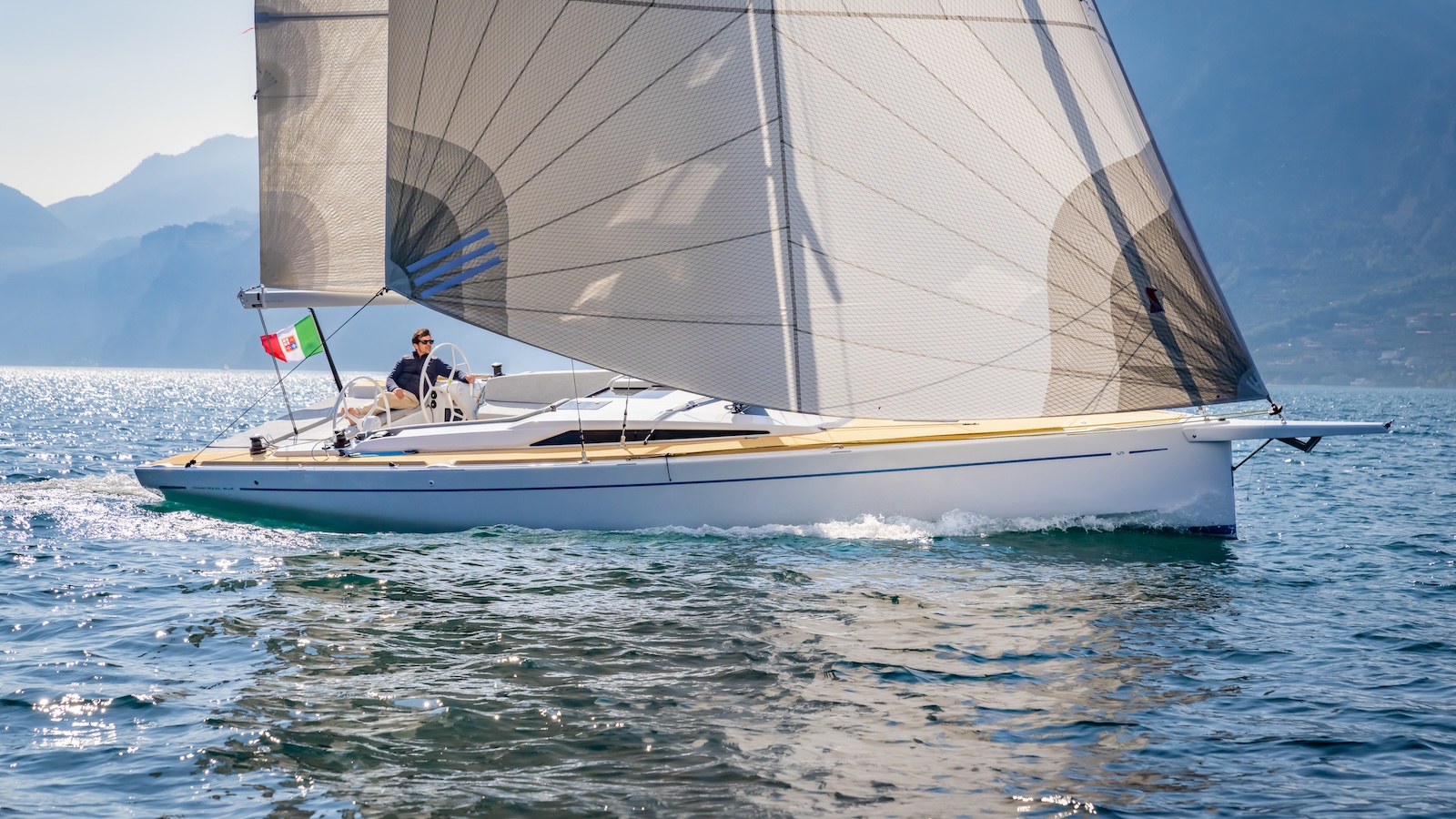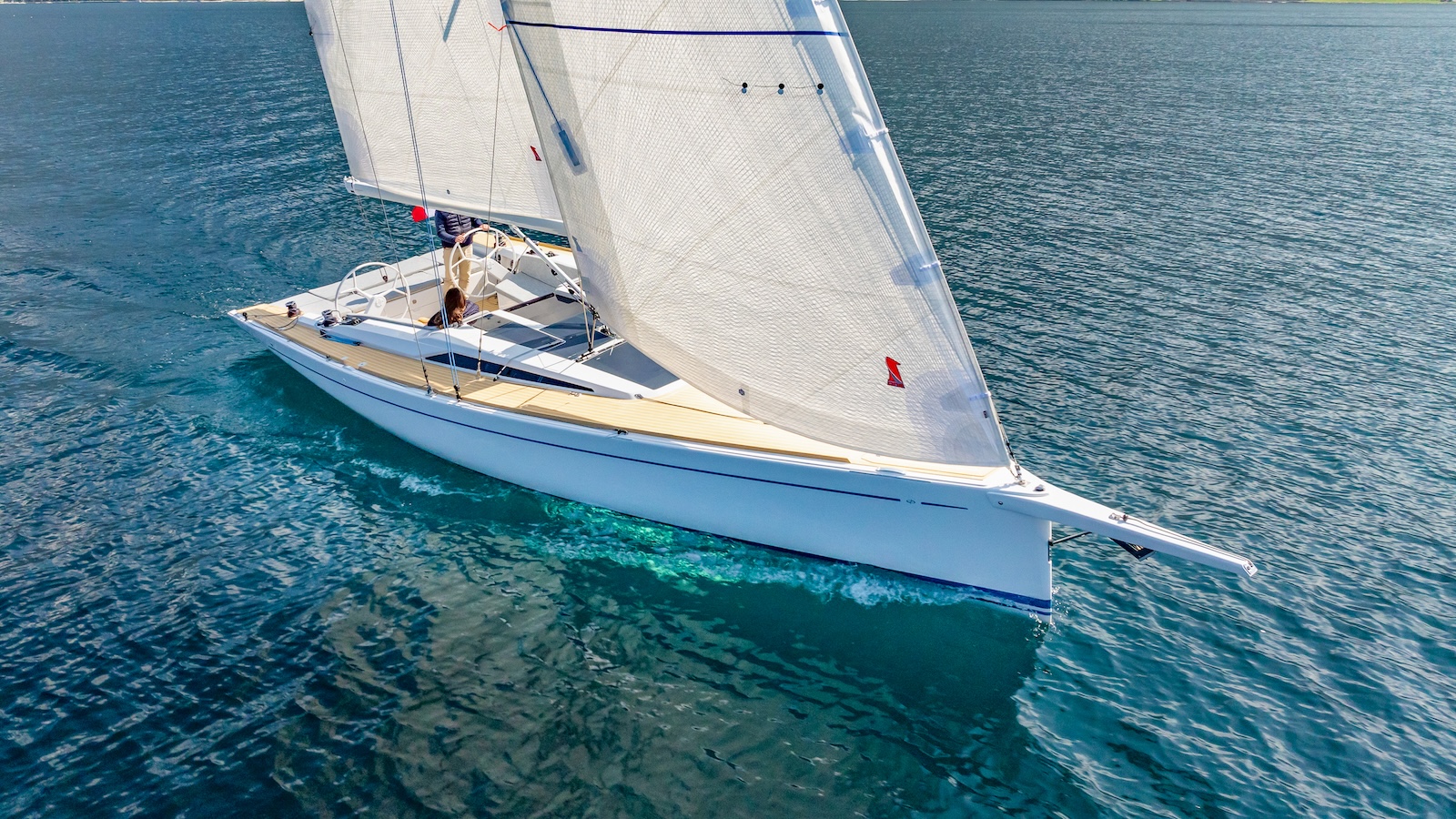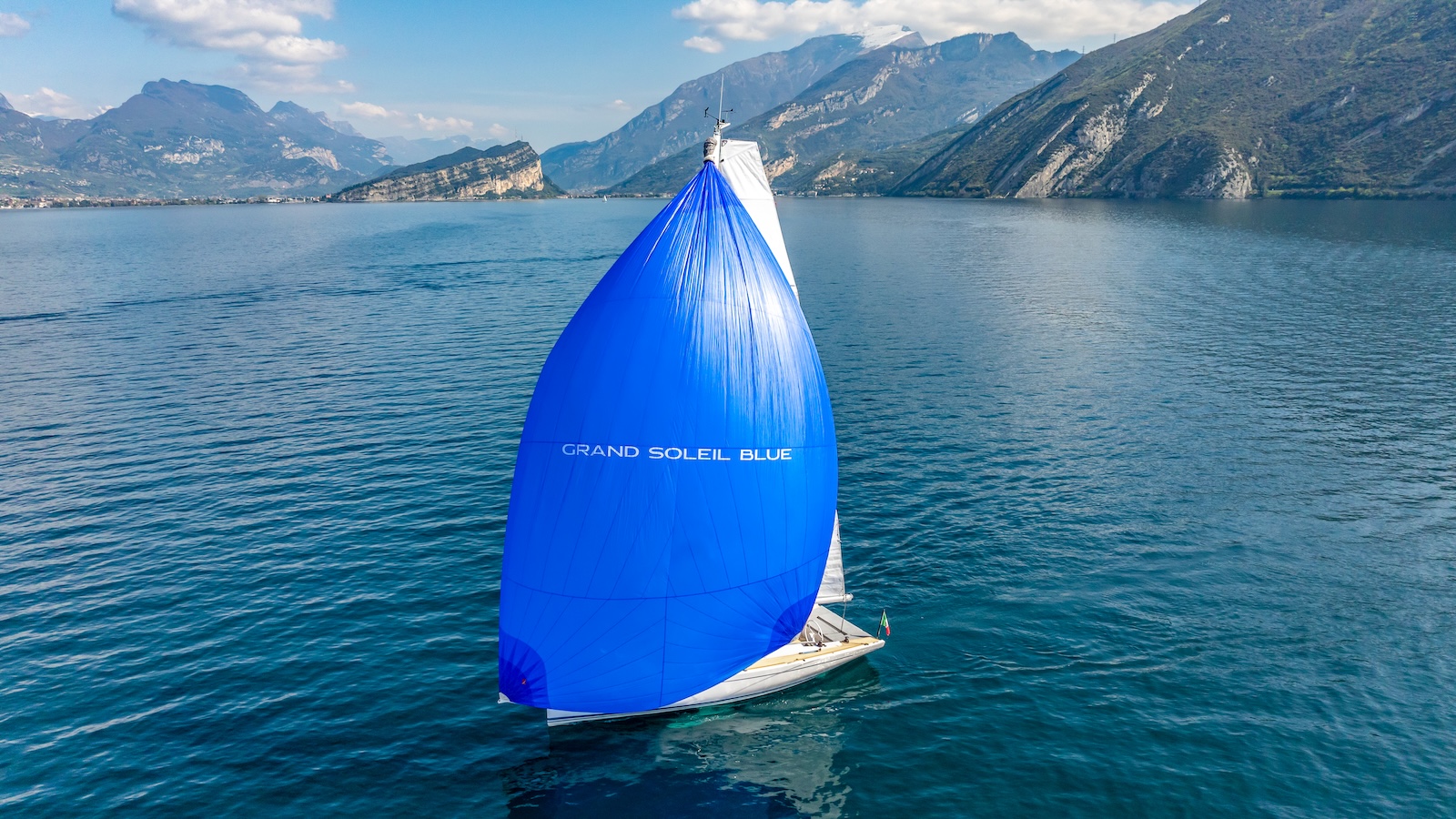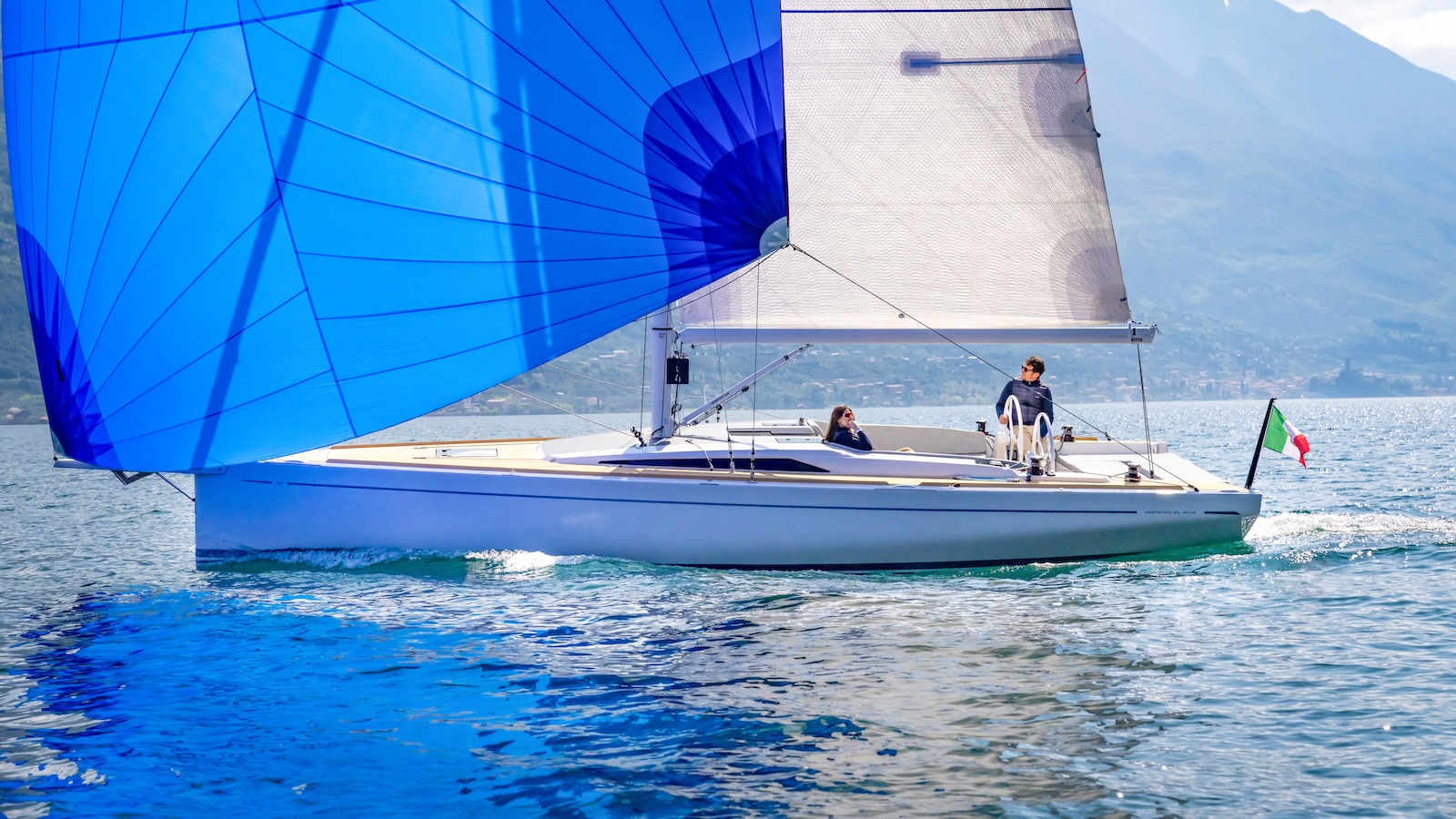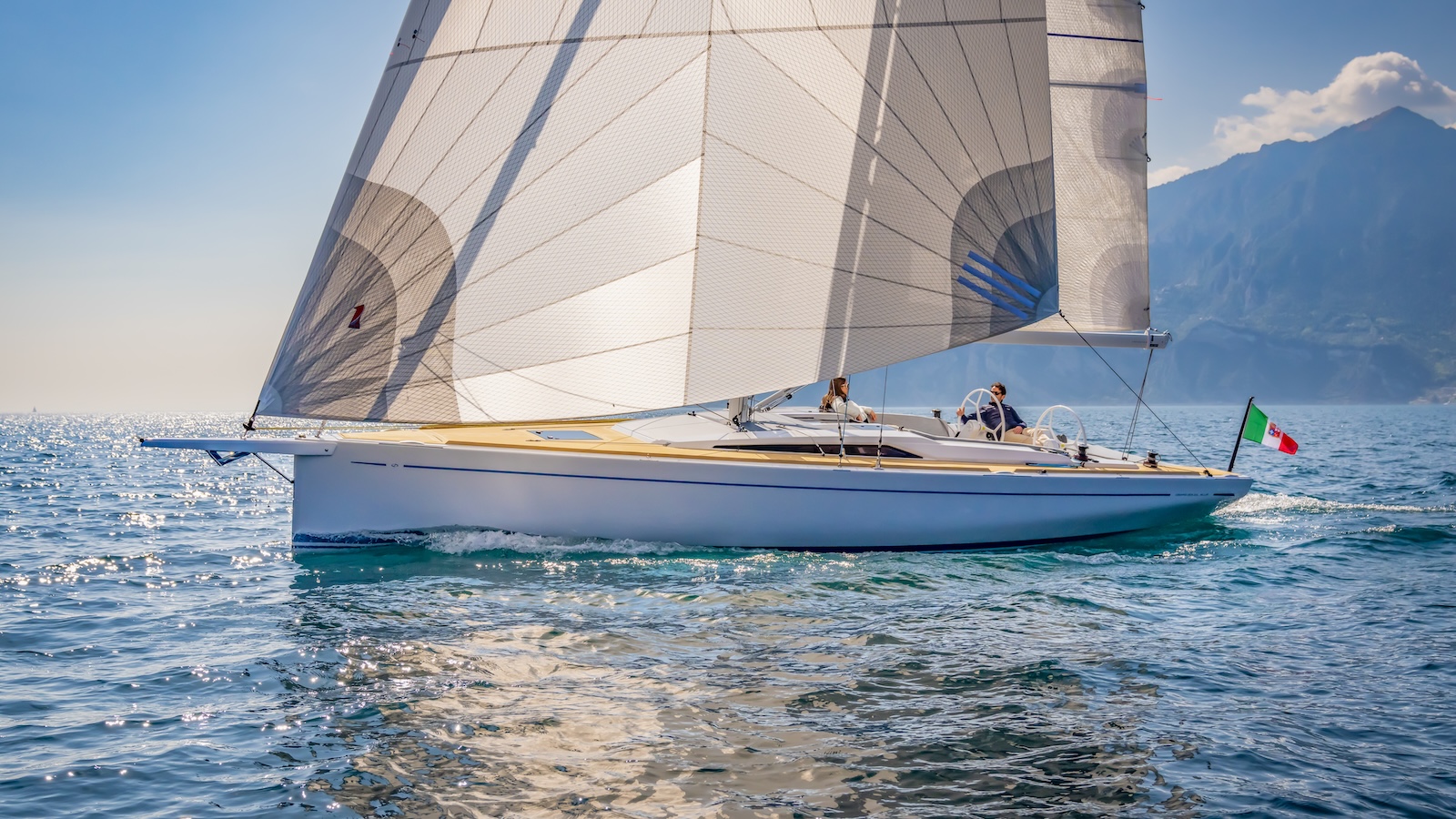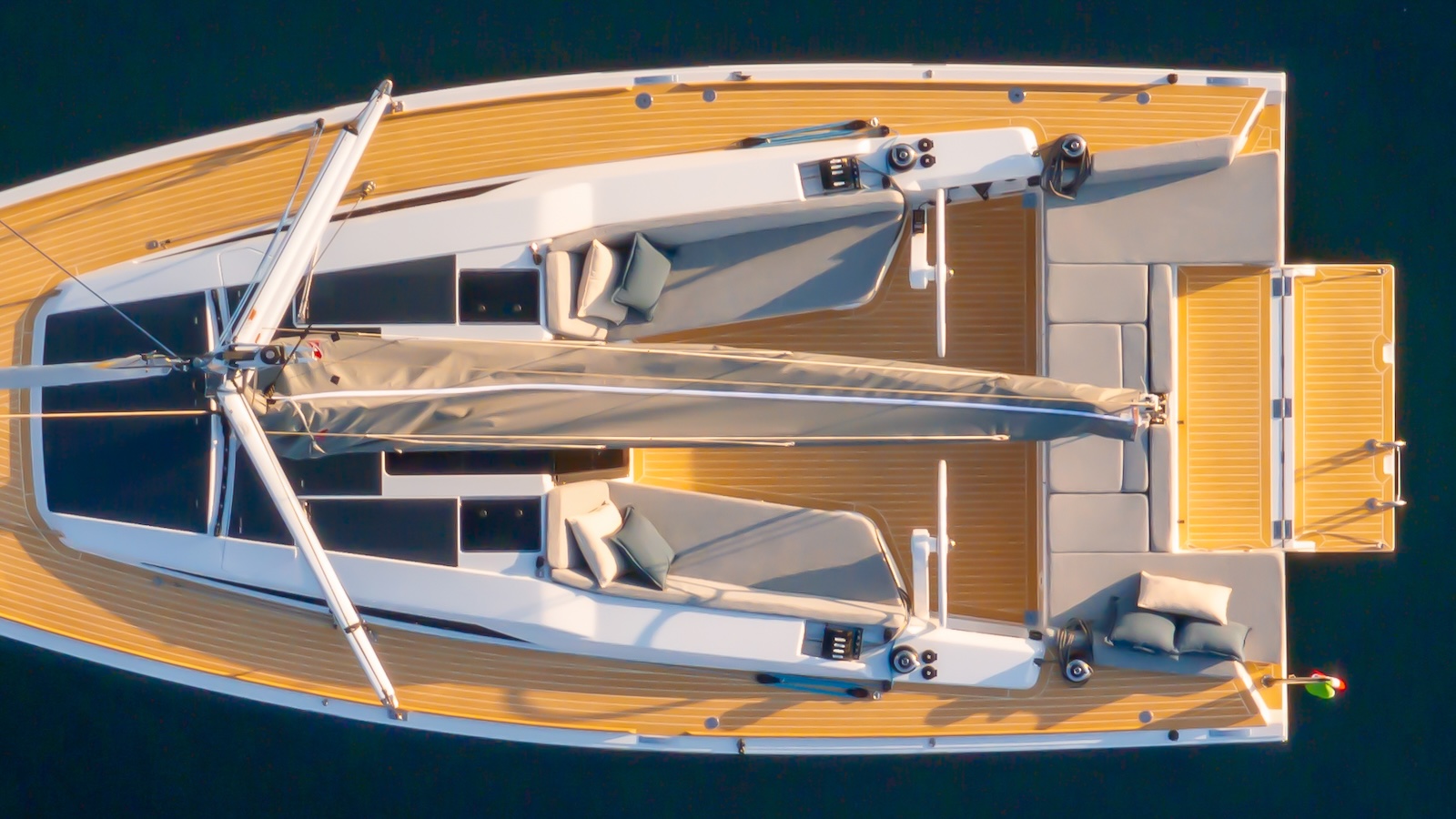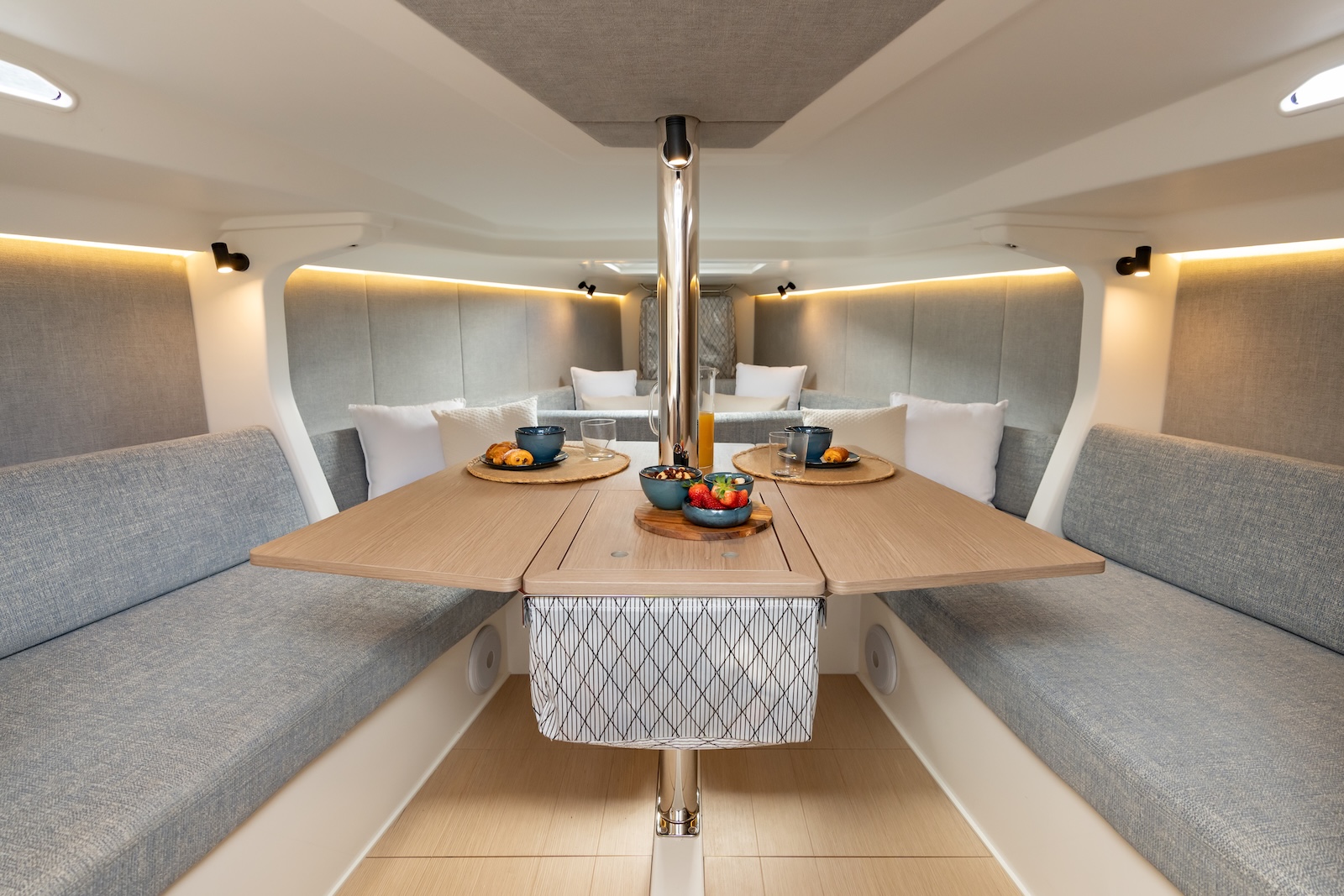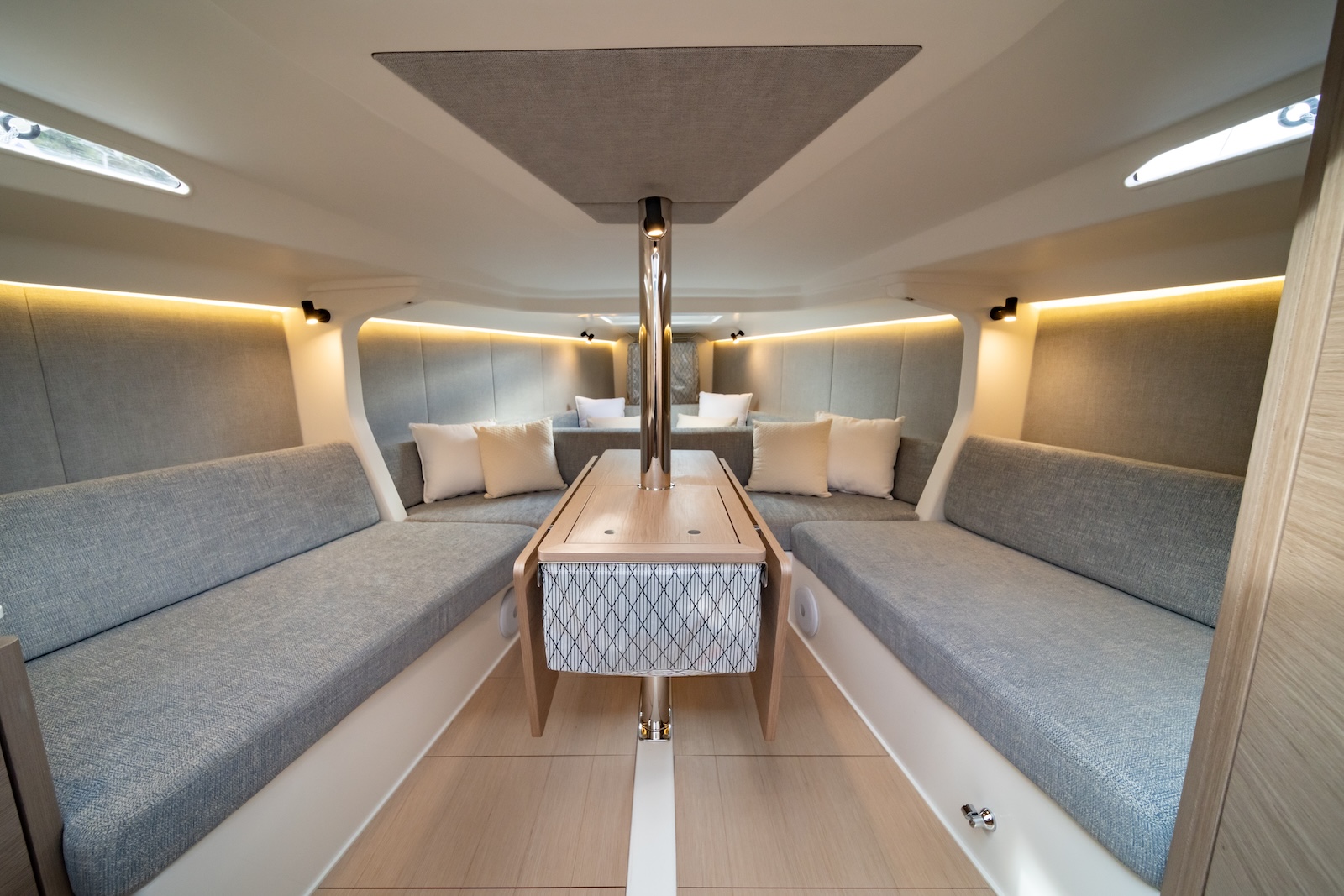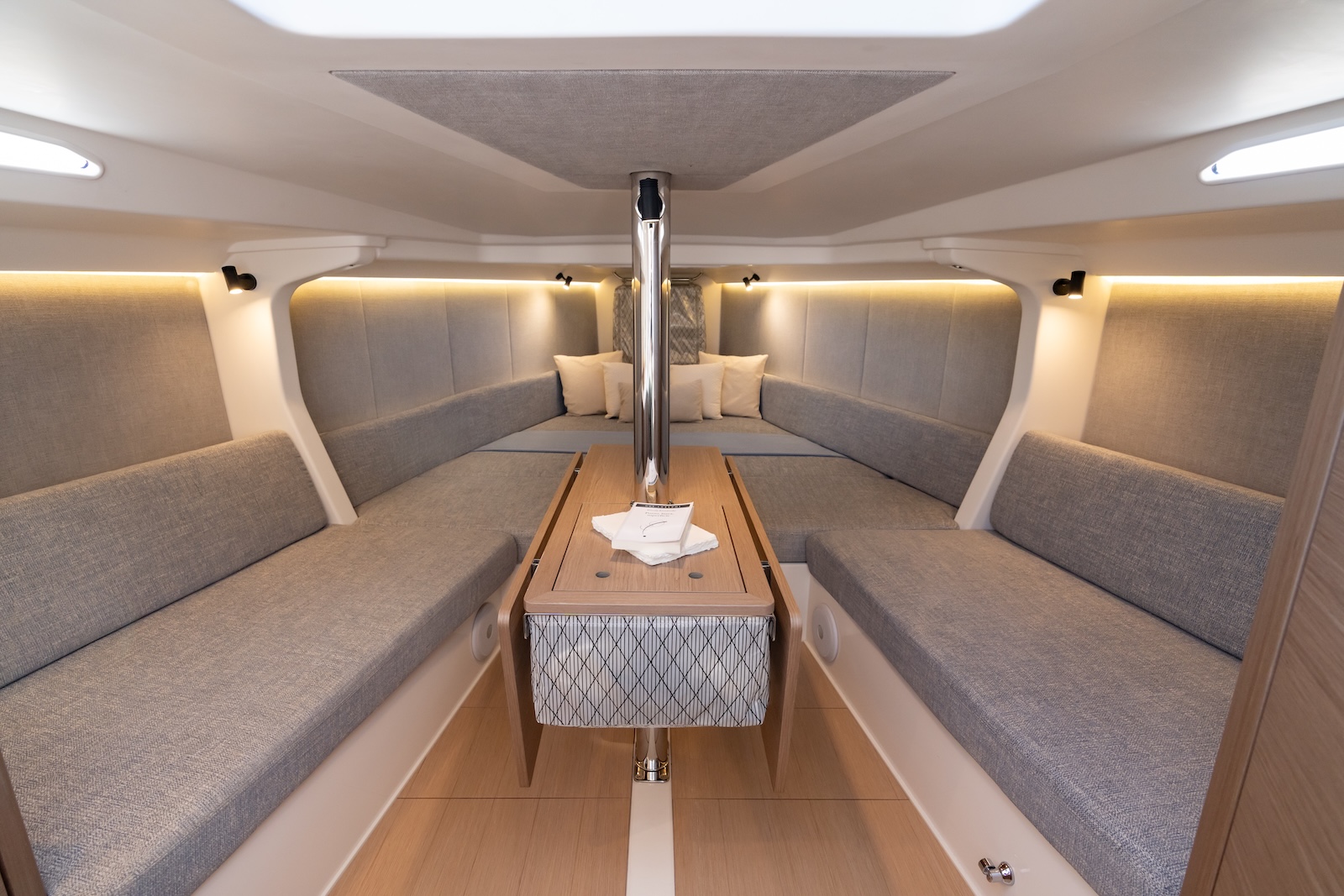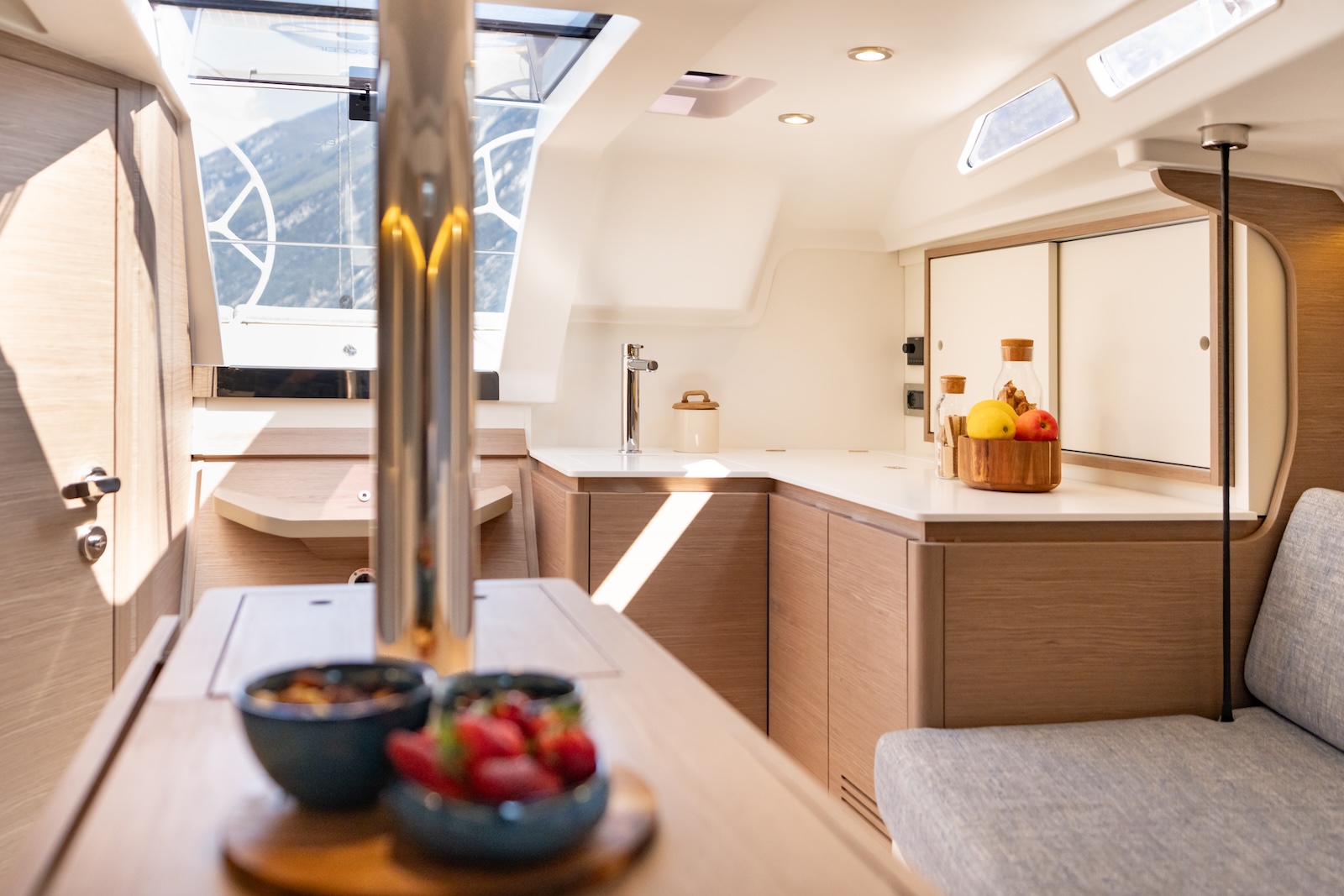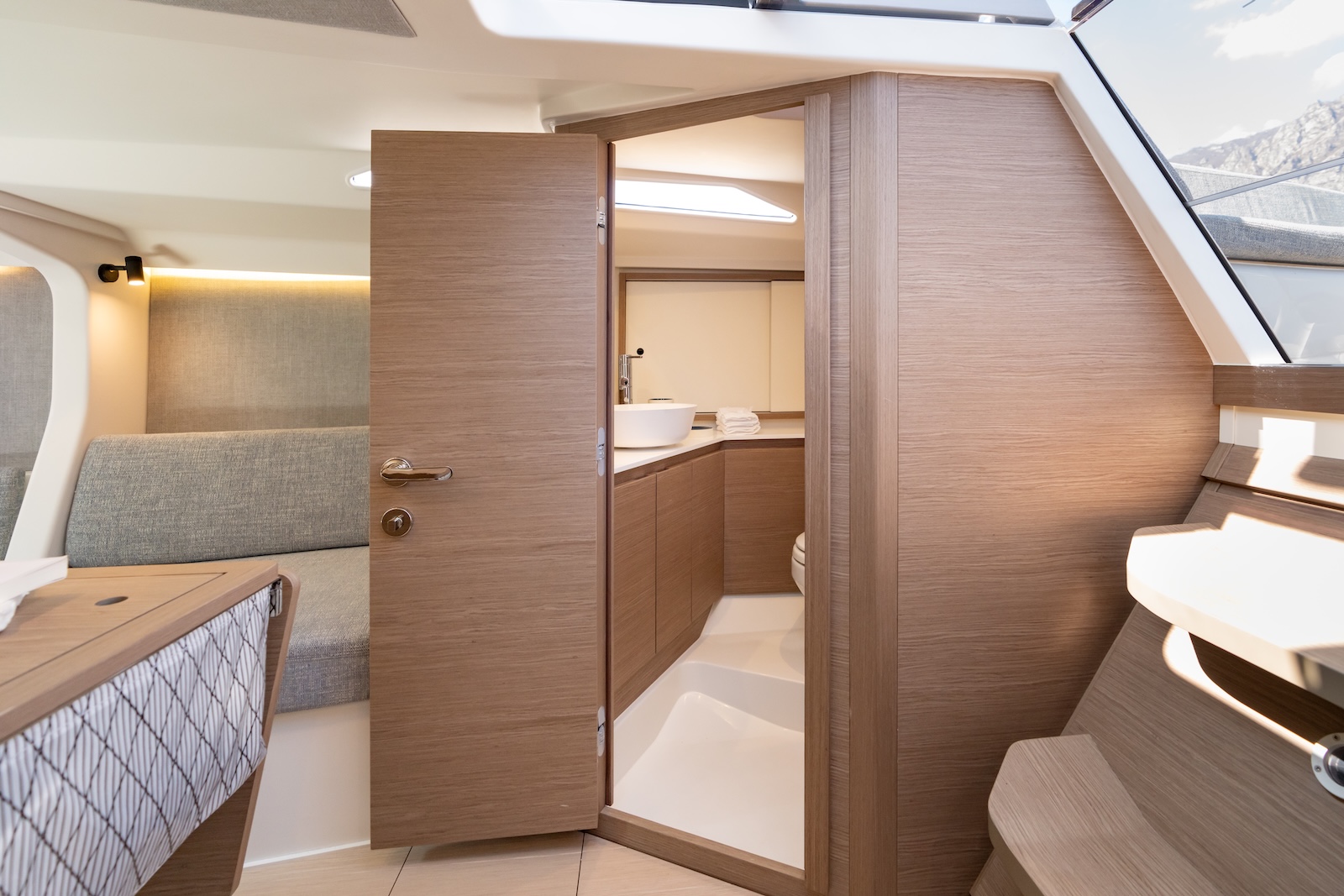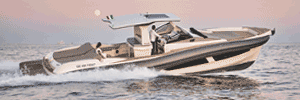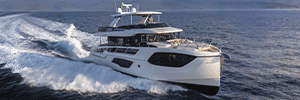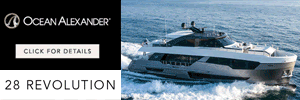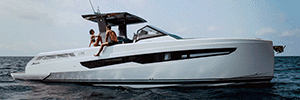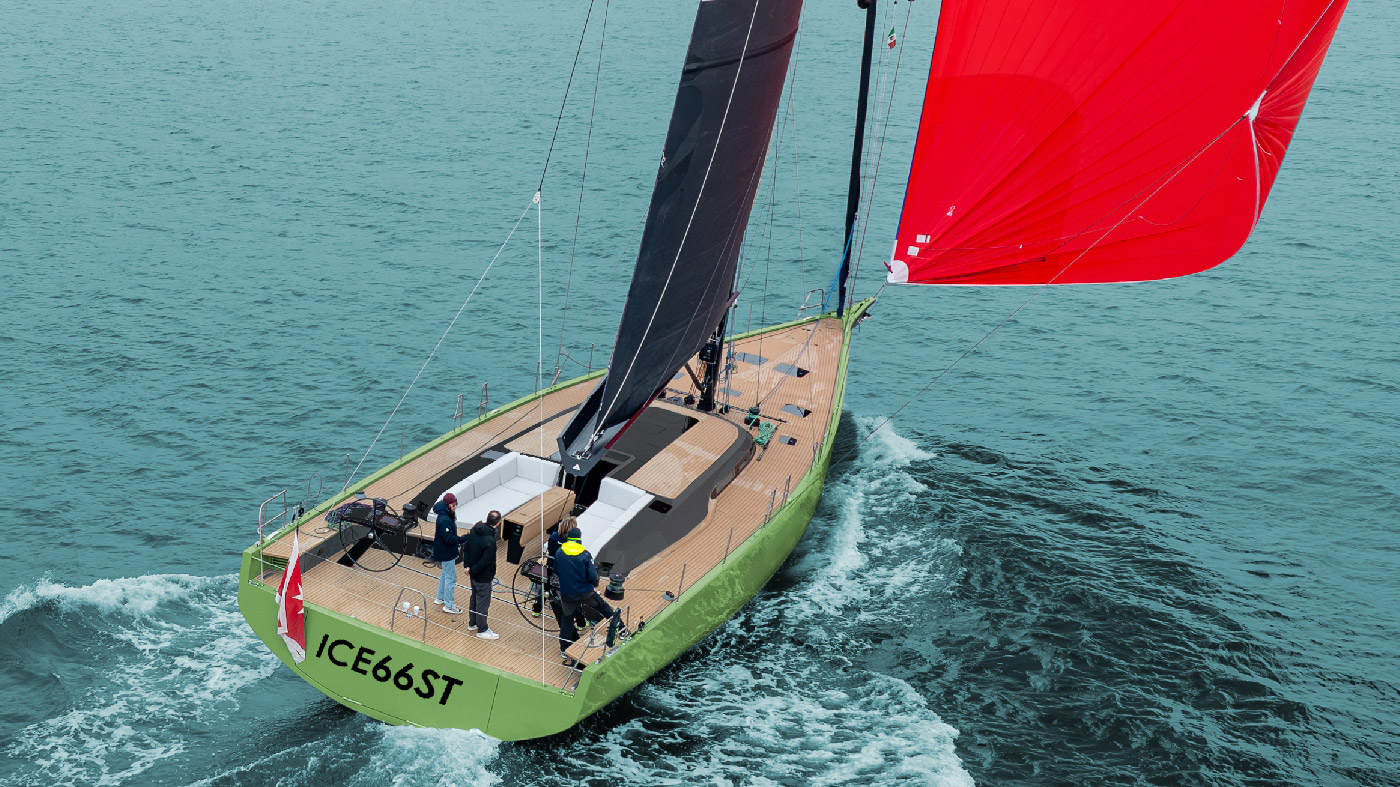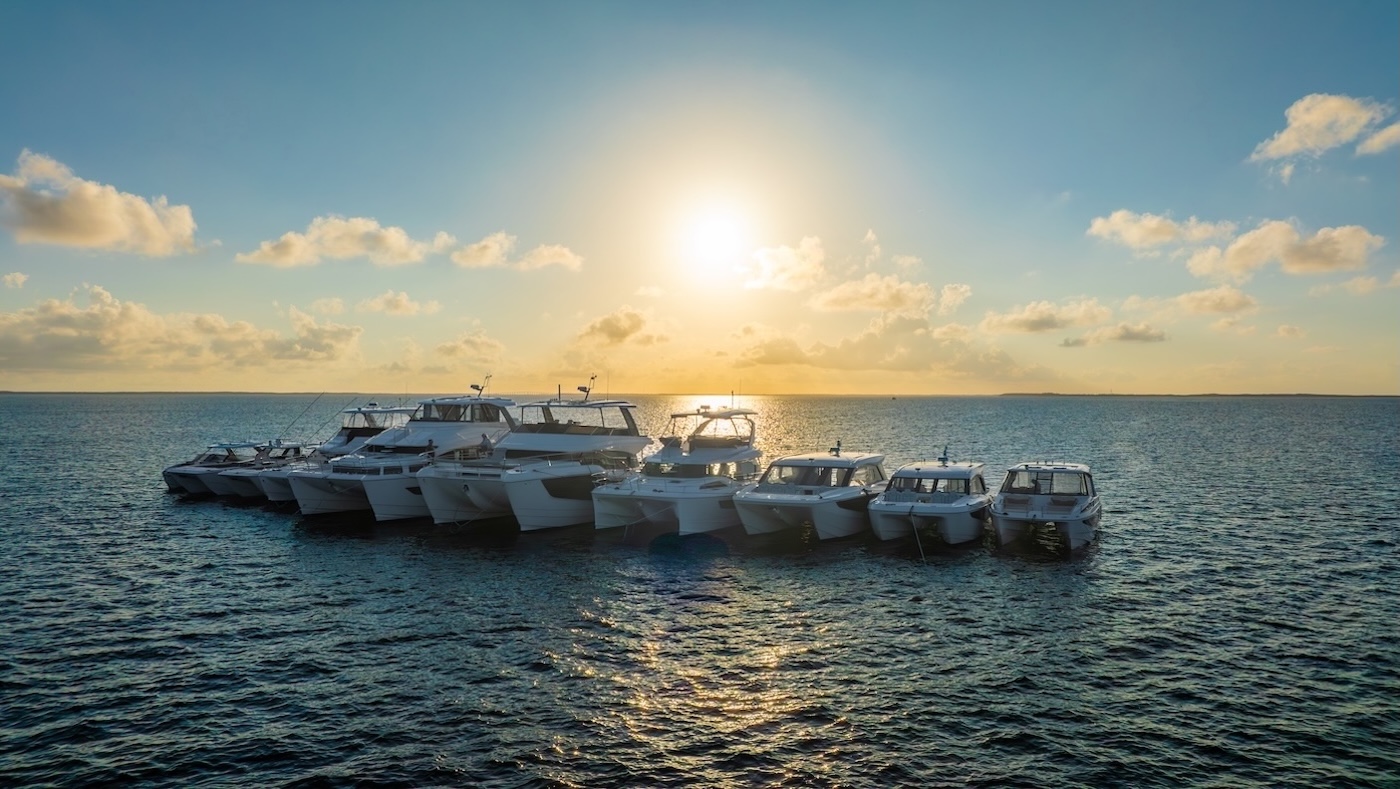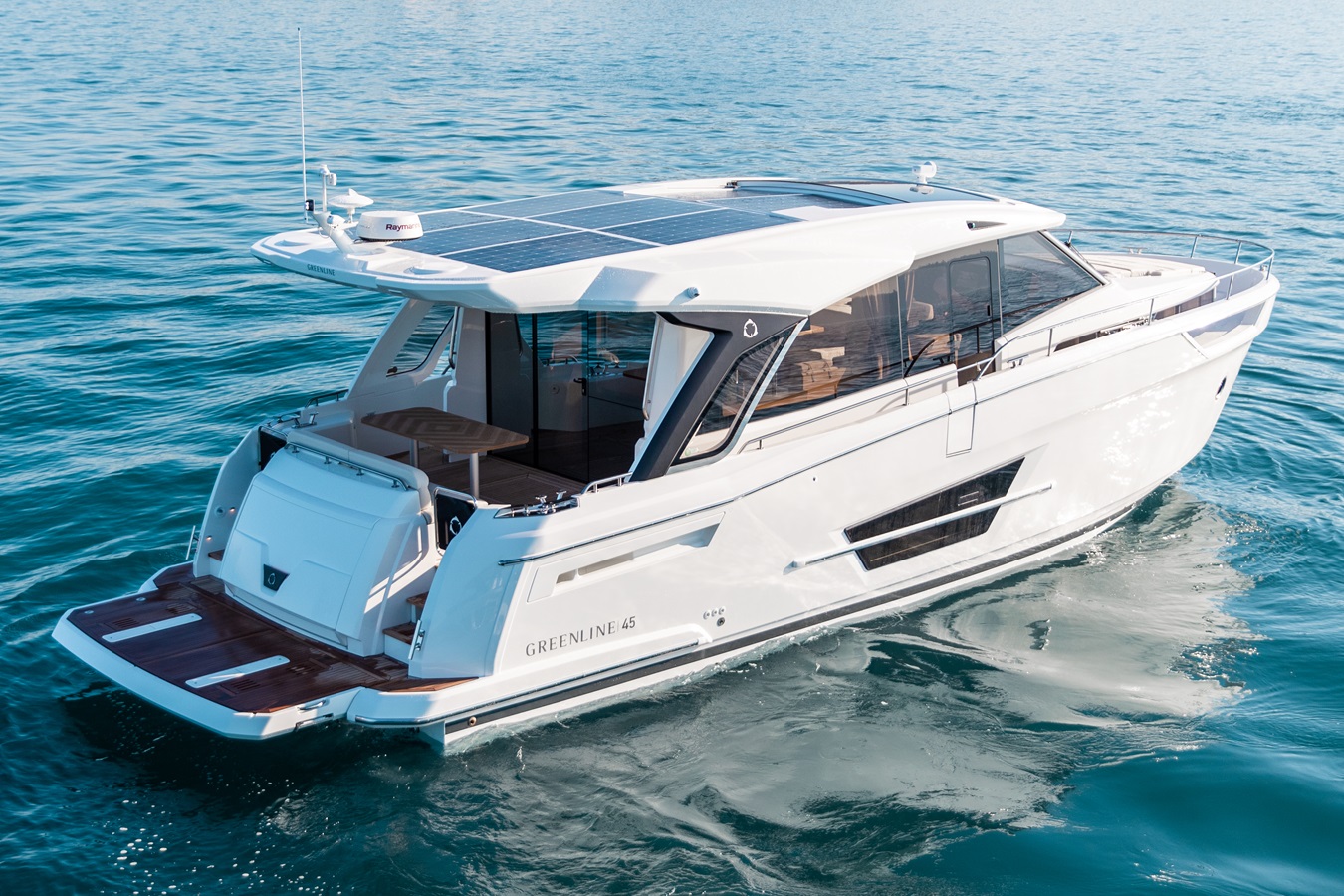The new Grand Soleil Blue marks Cantiere del Pardo’s entry into the weekender segment — a portion of the market that, up until now, has been almost exclusively dominated by Nordic shipyards which, with all due respect, have always built boats that are anything but sexy, and often come with a pretty poor value-for-money ratio.
Grand Soleil Blue, on the other hand, is simply stunning. Nauta Design has drawn up lines of jaw-dropping beauty that instantly make everything we’ve seen so far look outdated. It’s a masterpiece that Matteo Polli — brilliant as always — has taken to the next level with hull lines that seem to defy fluid dynamics, giving this 10-meter yacht the performance of a 15-meter and an almost absurd ease of handling.
It’s a success story already in the making. The huge wave of early demand has even pushed Cantiere del Pardo to create a more “traditional” version of the Grand Soleil Blue, fitted with a combustion engine, which will likely have a different name and is set to be unveiled soon.
But let’s take it step by step and dive into the reasons why I felt compelled to kick things off with such a bold opening.
Grand Soleil Blue Sea Trial
Malcesine is a sailor’s paradise. Here, the wind blows year-round with almost embarrassing consistency — just like right now, with the Ora, the local thermal breeze, blowing steadily from the south at around 9 to 10 knots.
There are seven of us aboard the Grand Soleil Blue and — first surprise — not only is there room for everyone, but we could comfortably fit a few more. The cockpit of this boat is so spacious, it feels more like what you’d find on a 50-footer.
The 6-kilowatt electric motor — just over 8 horsepower — quietly pushes us out of the slip without breaking a sweat, shrugging off the annoying crosswind which, true to Murphy’s Law, picks up the moment we cast off. Once outside the harbor, we sail upwind at a steady 5 to 6 knots, with our silent companion showing no signs of strain. The power output is perfectly calibrated.
The big 38-square-meter mainsail goes up in seconds. The electric winches onboard the Grand Soleil Blue eliminate all physical effort — and more importantly — let one person manage the boat entirely from behind the wheel. Finally, we unfurl the 26-square-meter self-tacking jib, kill the motor, and bear away.
The Grand Soleil Blue accelerates without hesitation, gliding over the water smoothly. Speed increases quickly, effortlessly reaching numbers that are pretty wild for a sailboat of this size. On a beam reach, we’re steadily above 8 knots; pointing up to the typical 30 degrees apparent, we hold a solid 7.7 to 7.8 knots.
The wheel is light and prompt, allowing for micro-adjustments — practically begging you to push it harder. I ease into the wind, tweaking gently until we hit 24 to 25 degrees apparent. The boat just won’t slow down — we’re still doing 7.4 knots!
A bit skeptical, I glance up and see the windex arrow well inside the usual range. No doubt about it — we’re absolutely nailing this upwind angle.
At the helm, contrary to what you might expect from a boat with this level of performance, the Grand Soleil Blue is always neutral and forgiving — incredibly easy to handle, perfect for fast, hassle-free sailing during the long weekends it was designed for. Even the heeling is always moderate. Matteo Polli specifically designed this hull with that in mind, and in fact, top performance is achieved without having to push the heel angle to extremes.
The wind picks up, rising to 15–16 knots with gusts over 17. Now, close-hauled, we’re constantly sailing above 8 knots, with peaks of 8.3 to 8.4 — unbelievable!
Bearing away, even with just the self-tacking jib, the speed increases and stabilizes at 9.5 to 9.7 knots. Once again, the Grand Soleil Blue astonishes me with its incredible balance — even in conditions where most sailboats would start heading up strongly into the wind.
The wheel is light and prompt, allowing for micro-adjustments — practically begging you to push it harder. I ease into the wind, tweaking gently until we hit 24 to 25 degrees apparent. The boat just won’t slow down — we’re still doing 7.4 knots!
A bit skeptical, I glance up and see the windex arrow well inside the usual range. No doubt about it — we’re absolutely nailing this upwind angle.
At the helm, contrary to what you might expect from a boat with this level of performance, the Grand Soleil Blue is always neutral and forgiving — incredibly easy to handle, perfect for fast, hassle-free sailing during the long weekends it was designed for. Even the heeling is always moderate. Matteo Polli specifically designed this hull with that in mind, and in fact, top performance is achieved without having to push the heel angle to extremes.
The wind picks up, rising to 15–16 knots with gusts over 17. Now, close-hauled, we’re constantly sailing above 8 knots, with peaks of 8.3 to 8.4 — unbelievable!
Bearing away, even with just the self-tacking jib, the speed increases and stabilizes at 9.5 to 9.7 knots. Once again, the Grand Soleil Blue astonishes me with its incredible balance — even in conditions where most sailboats would start heading up strongly into the wind.
We bear away further, furl the jib, and hoist the massive 100-square-meter gennaker. It fills instantly, the luff shifting to windward, and the Grand Soleil Blue accelerates again, pushing the speedo into double digits almost immediately.
Now the true wind is holding steady at 17–18 knots, and we’re consistently sailing above 10–11 knots, peaking just under 12. In these conditions, the lake kicks up waves that come in from astern — but they do nothing to shake our course stability. During a gybe, the sheet on the new tack is a bit too tight, and sure enough, the boat rounds up. I throw the helm hard over and, incredibly, the rudder still holds — immediately stopping what could’ve been a nasty broach. The trimmer eases the sheet, and just like that, we’re back on course, still flying along at over 10 knots.
The level of safety on this Grand Soleil Blue is unquestionably above average. We sail on like this for hours, playfully fighting over who gets to steer. This weekender, believe me, doesn’t just blow every other boat in its segment out of the water — it delivers pure joy and zero worries to anyone lucky enough to own one.
Grand Soleil Blue in detail
If I had to briefly describe what the Grand Soleil Blue is to a friend, I’d say it’s a classy weekender and I’d happily take it cruising for far longer than just a weekend. Fast, safe, and damn good-looking, it has a huge cockpit and an aft sundeck that just invites to relaxing moments.
Deck
The deck of the Grand Soleil Blue is a small masterpiece of design and space engineering, as immediately clear from the moment you step aboard. The large aft sundeck cleverly conceals both the fold-down swim platform with ladder and the mainsheet traveler, which can be operated directly by the helmsman. From the twin wheels, you can manage practically everything without moving an inch—winches and their electric controls, halyards, sheets… it’s all within arm’s reach.
Moving through the immense cockpit, we find two long side benches that can seat 3 to 4 people each, though personally, I love them for their high backrests and the forward-slanting ends that turn them into super comfortable chaise longues.
Between the benches, there’s a drop-leaf table that comfortably seats four and, if you want, can be completely removed and stowed below deck.
The coachroof features large solar panels that are fully integrated into the molding. They’re walkable, virtually invisible, and deliver an impressive 340 W of nominal power.
Interior
The interior of the Grand Soleil Blue is simply brilliant. Even with the typical headroom of a weekender, it cleverly solves the issue of getting below deck thanks to its slanted companionway. It’s a smart solution that allows even taller people to have access in total comfort and safety.
Once you’re down below, you’re blown away by how spacious it feels. The interior design creates a sense of volume that seems to defy physical limits—almost like a “charm of undetectable extension” (yep, that’s a Harry Potter reference).
The layout seamlessly transforms from its “day mode,” where up to eight people can gather around the large fold-out central table, to its “night mode,” which offers four comfortable berths. Rounding out the interior of this weekender are a separate bathroom and an L-shaped galley complete with a sink, top-loading fridge, and plenty of storage for provisions.
One thing’s for sure: when sailing as a couple—my favorite setup—this boat offers the same comfort as a spacious, luxurious suite.
Grand Soleil Blue and Sustainability
With the Grand Soleil Blue, Cantiere del Pardo set out to create a truly sustainable boat. And it’s not just a design statement—it’s a real, tangible achievement that’s now within reach for many.
This sailing yacht tackles the end-of-life disposal issue head-on, thanks to its innovative construction methods, the “design for disassembly” approach, and the use of thermoplastic sails from OneSails. These choices allow every single component of the boat to be disassembled and disposed of with minimal or even zero environmental impact.
The choice of an electric engine, integrated solar panels, and the ability to harness hydrogeneration to recharge the lithium batteries all complete the picture of a boat that can genuinely operate with an environmental footprint that’s close to zero.
And in those rare situations where there’s absolutely no wind, the Grand Soleil Blue still boasts a range of up to 60 nautical miles, thanks to the upgraded battery pack. Though let’s be honest—that’s a purely theoretical range, given how well this boat sails.
It’s an important project that gives Cantiere del Pardo’s customers the opportunity to make a meaningful choice—embracing a yacht that’s way ahead of the curve when it comes to sustainability.
Grand Soleil Blue Technical Specs
LOA | 11.3 m |
LH | 9.99 m |
Max Beam | 3.70 m |
Standard Draft | 2.2 m |
Shallow Draft | 1.8 m |
Displacement | 3,500 kg |
Ballast | 1,200 kg |
|
|
Mainsail | 30 sqm |
Jib | 26 sqm |
Code 0 | 60 sqm |
Gennaker | 100 sqm |
|
|
E-propulsion Pod Drive 6.0 EVO Engine | 6KW – 8.16 HP |
Standard Battery | 8 KW |
Optional Battery | 16 KW |
Standard Range | 30 nm at 5 kn |
Optional Range | 60 nm at 5 kn |
Hydrogeneration | 240 w at 6 kn |
Solar Panels | 340 w nominal |
|
|
System Power Capacity (std) | 190 Ah |
System Power Capacity (opt) | 380 Ah |
Water Capacity | 70 l |
|
|
Interior and Exterior Design | Nauta Design |
Naval Architecture | Matteo Polli |
Builder | Cantiere del Pardo |

